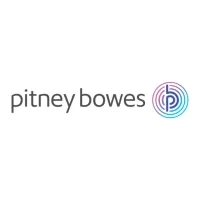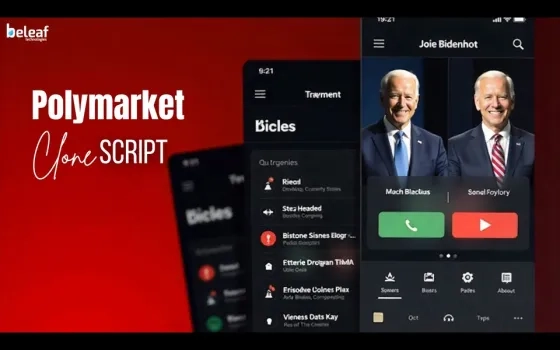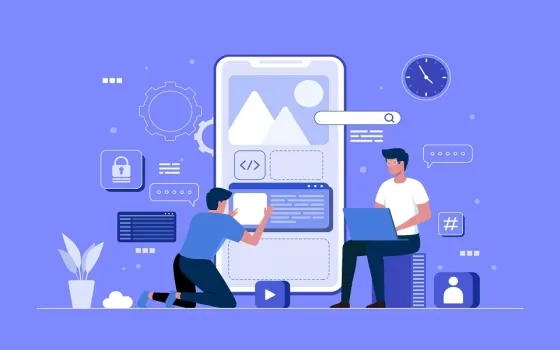If you are a SaaS business and have a Desktop or Browser-based version of your SaaS application, should you consider developing a mobile version of your application? Research shows that adults in the US use their mobile phones to go online, spending most of their time on in-mobile apps.
It’s not a question of “if” you should consider building a mobile app for your SaaS application, but “when” you need to commit. This article captures the key mobile strategies to consider, what technology options to choose from and key KPIs to measure the effectiveness of your mobile app post-launch.
Mobile Strategies
- Mobile First
In mobile-first or mobile-only, organizations put mobile at the center stage of their SaaS business strategy and enable all capabilities of their products via mobile. Think of leading ride-hailing companies, audio streaming companies, or digital payments solution companies. Note that the mobile’s small screen may be a limiting factor for enterprise products which generally require complex business workflows.
Business models:
There are various business models that organizations can consider.
- Subscription-based – In this model, the app is enabled via app stores, and the business charges clients a monthly or yearly subscription fee
- Pay per click/transaction – In this model, the app is free i.e., it may not carry a subscription fee. Businesses make money as per transactions as users use the app
- In-app advertising – In this model, the app is free i.e., it may not carry a subscription fee. It may not even have a per-click transaction charge. Businesses make money via in-app advertising
- Hybrid model - A combination of the above models
- Companion App
A companion app is generally an app that complements the Web/Desktop version of your product. It may not be comprehensive in features and functionalities but provides a way for users to use the key product capabilities on the go. For example, Banking apps.
Business models:
Such an app is generally free with no monthly or yearly subscription.
- Mobile Extension
In this case, mobile is another offering like Web and/or Desktop app and provides users an ability to perform almost all functions via Mobile that can be done by Web. For example, an on-demand financial and human capital management software.
Business models:
The app could be free with no monthly or yearly subscription and offered to users as a value-added service or could charge a monthly/yearly subscription similar to the web app and/or per click charge for making transactions through the app.
Technology Options to Develop Mobile Apps - Native vs Hybrid vs Web:
Once you have decided which mobile strategy you want to take, what are the technology choices available to develop the mobile app?
- Web app
A web app is a condensed version of your website and runs within a browser. The app doesn’t need to be published on app stores. Users just hit the URL in the browser of the mobile phone and get access to the app’s functionality.
Advantages:
- The cost of development is less as you use the same codebase as that of your website
Disadvantages:
- The main disadvantage is the user experience e.g. users will have to scroll up and down to access the app’s functionality which may not be very user-friendly
- Another disadvantage is that you can’t provide users features like mobile native push notifications, or get access to the mobile’s hardware to use camera or vibration across both Android and iOS platforms.
- Native
Native mobile apps are developed in OS native technology – Swift & Objective-C for iOS and Java or Kotlin for Android. This is the most common method of developing mobile apps. Mobile apps in this case are enabled via app stores.
Advantages:
- Since the product is written natively using OS-level libs, the performance is top-notch
- The user experience is the best as you are not limited to HTML, CSS, Javascript, etc., similar to web apps, but have access to OS native UI libs to develop UI components/Controls, etc.
- You get access to all of the hardware of mobile phones like camera, vibration, mic, etc., depending upon the functionality of your app, you could leverage the hardware integration to take advantage of capabilities like OCR (Optical Character Recognition) or AR (Augmented Reality).
Disadvantages:
- The main disadvantage is that a lot of time and money would need to be invested in the development of the mobile app for both operating systems separately.
- Hybrid
A Hybrid app is a combination of web and native mobile technologies. It is built using HTML, CSS, and JavaScript and runs in a WebView. It’s essentially a web app but includes additional OS native features. There are quite a few hybrid app development frameworks like Reach Native, Xamarin, Ionic, etc.
Advantages:
- The main advantage is that the code is written once and it runs on both platforms, iOS and Android
- Reduction in development time cost
- Shorter time to market since the same code works on both platforms
Disadvantages:
- User experience may not be top-notch
- Performance could be an issue as compared to native apps
The choice of which tech stack to go with would depend on the following key factors:
- Time to market
- Development cost that you are willing to invest
- Performance and user experience of the app
- Access to the phone’s hardware depending on the app’s functionality
Key Business KPIs to Track Post Launch Of Mobile App
Once you have launched your mobile app on the app stores, consider tracking the below mentioned main KPIs to gain insight into the business performance of your mobile app:
The ratio of the number of downloads vs activation (E.g. users signing in/signing up for a subscription of the app or making a transaction) provides you an insight into the take rate of your app. If you don’t see this conversion ratio improving over time, you would need to identify where the ‘drop’ is happening.
- Average Revenue Per User to track (ARPU):
This is an important metric to track for subscription-based or revenue-generating apps. And if you don’t see this metric improving over a period of time, then the number of app downloads and monthly active user count are metrics to watch and identify what improvement is required.
Churn rate is measured as the number of users canceling the subscription of your app over a period of time divided by the total remaining customers. This attribute is a vital one to indicate the success of your app, if it starts to increase, you would need to deep dive into the reasons and take appropriate actions.
The stickiness of an app is calculated by dividing daily active users by monthly active users x 100. If this number improves over a period of time, it indicates that users use your app multiple times a day/multiple sessions and are engaged with the app.
CPI is the average amount of money you spend on every installation of the app. You can find the CPI number by dividing the total cost of marketing by the total number of users acquired over a period. You would want to keep CPI costs as minimal as possible.
- Customer Lifetime Value (CLTV)
CLTV is how much revenue you can expect from a customer. For example, if a customer on average spends $10 using the app per transaction, makes 100 transactions on average per year, and stays a customer of the app for 1 year, CLTV would be $1000. You can compare this number with CPI and if CPI starts to go up, you know you would be making a loss with every new install.
As Eric Schmidt, Executive Chairman of Alphabet Inc., warned us back in 2010, “Mobile will ultimately be the way you provision most of your services. The way I like to put it is, the answer should always be mobile-first. You should always put your best team and your best app on your mobile app.”
And more than a decade later, Schmidt’s statement is more compelling and truer than ever. Consequently, if you want to build a modern, competitive business, make mobile one of your top priorities.
- This article has been written by Mukesh Kumar Gupta, Senior Director, Product Development, Pitney Bowes India

























